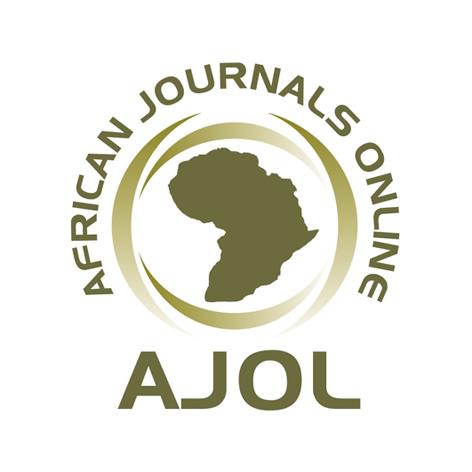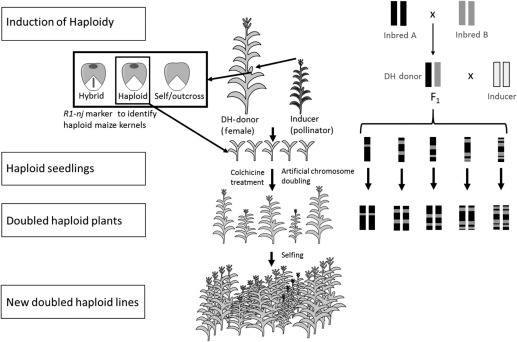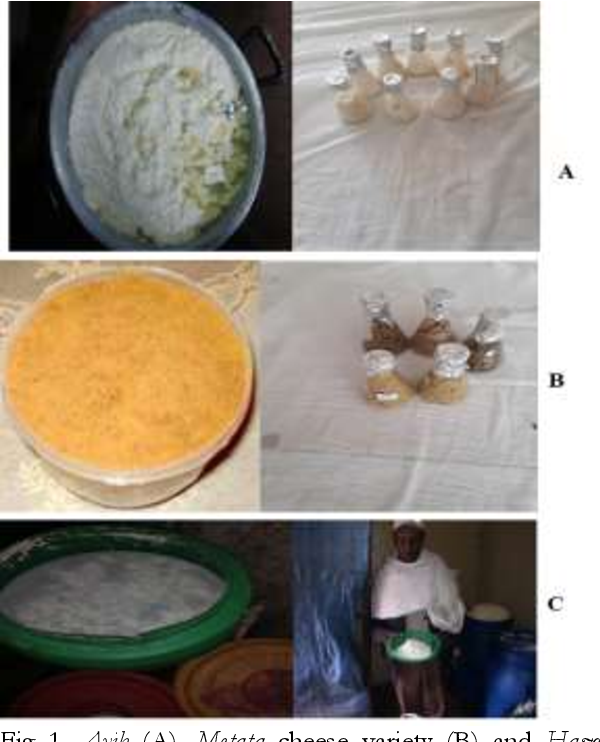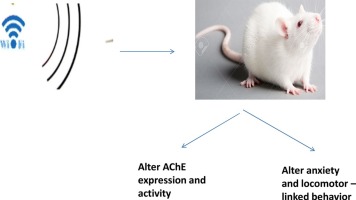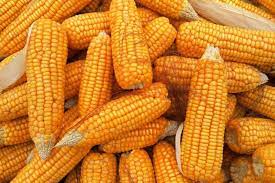Variations in the Composition and Biomass of Phytoplankton Species as a Function of Physicochemical Factors in Lake Kuriftu, Central Ethiopia
Downloads
Background: Analyzing the spatio-temporal dynamics of physicochemical and phytoplankton communities provide valuable insights into water quality, ecosystem health, pollution sources, and supports effective water resource management and conservation efforts.
Objective: The objective of this study was, therefore, to evaluate water quality status of Lake Kuriftu using a combination of both biotic and abiotic factors.
Materials and Methods: Water samples were collected from the Lake in triplicates both in the dry and wet seasons from five different sampling sites based on Lake zonation, and human interference during the wet and dry season in 2018. Physico-chemical parameters such as temperature, pH, dissolved oxygen and electrical conductivity of the water were measured in situ with a portable multimeter probe (HACH, HQ 40d, USA) designed for water samples, while turbidity was measured by a portal digital Turbidimeter (T-100 Singapore). Secchi depth (ZSD) was estimated using a 20 cm diameter Secchi disk. Concentrations of nutrients and heavy metals were determined following standard methods. Abundance of phytoplankton and their seasonal dynamics were estimated in terms of biovolume and calculated using the appropriate geometric shape of the major species. The data were then analyzed with a multivariate analytic technique Redundancy Analysis (RDA) to illustrate the correlations between abundance of dominant phytoplankton species and physicochemical characteristics. Correlation between dominant phytoplankton specie and environmental variables were analyzed by the Bi-plot of the constrained Redundancy Analyses (RDA).
Results: The pH, TDS, DO and Turbidity were in the ranges of 8.55 ± 0.13–9.06 ± 0.02, 134 ± 1–137 ±2 mg L–1 , 7.26–9.42 mg L–1 and 8.39–78.6 NTU, respectively. Cadmium and chromium concentrations were below the detectable level both in the dry and wet seasons while the concentration of lead was above the WHO permissible limits in the dry season. The concentration of iron was high in the dry season and low in most of the sites in the wet season. A total of six major phytoplankton groups were identified. These
were Chlorophyceae, Cyanophyceae, Bacillariophyceae, Dinophyceae, Cryptophyceae and Euglenophyceae in order of their abundance and frequency of occurrence. The species richness varied among the sampling sites in the lake and a total of 30 species belonging to six families and 24 genera were recorded from the lake.
Conclusion: The water quality parameters such as, pH, TDS, DO, and Turbidity exhibited consistent ranges within acceptable limits. Cadmium and chromium concentrations remained undetectable throughout both the dry and wet seasons while the concentration of lead was above the WHO permissible limits in the dry season. Phytoplankton distribution showed a remarkable difference and Blue-green algae was the most dominant species. Thus, further research should be conducted to explore long-term phytoplankton trends and factors influencing Blue-green algae dominance.
Adane Sirage. 2006. Water quality and Phytoplankton
Dynamics in Legedadi Reservoir. M.Sc. Thesis,
Addis Ababa University, Addis Ababa,
Ethiopia. Pp. 92.
Adimassu Woldesenbet. 2015. Physicochemical and
biological water quality assessment of Lake Hawassa for multiple designated water uses.
Journal of Urban and Environmental Engineering
(JUEE), 9(2): 146–157.
APHA (American Public Health Association). 1999.
Standard methods for the examination of water
and wastewater. Washington DC. Pp. 541.
Arguelles, D., Martinez-Goss, R. and Shin, W. 2014.
Some noteworthy photosynthetic
euglenophytes from Los Banos, Laguna
(Philippines) and its vicinities. Philippines Scientist,
: 1–36.
Augspurger, N.R., Webel, D.M., Lei, X.G. and Baker,
D.H. 2003. Efficacy of an E. coli phytase
expressed in yeast for releasing phytate-bound
phosphorus in young chicks and pigs. Journal of
Animal Science, 81(2): 474–483.
Brook Lemma. 1994. Changes in the limnological
behaviour of a tropical African explosion crater
lake:L.Hora-Kilole, Ethiopia. Limnologica, 24(1):
–70.
Brook Lemma, Benndorf, J., and Koschel, R. 2001. Fish
predation pressure on and interactions
between cladocerans: Observations using
enclosures in three temperate lakes (Germany)
and one tropical lake
(Ethiopia). Limnologica, 31(3): 209–220.
Bucci, M.M.H.S., Delgado, F.E.D.F. and de Oliveira,
L.F.C. 2015. Water quality and trophic state of a
tropical urban reservoir for drinking water
supply (Juiz de Fora, Brazil). Lake and Reservoir
Management, 31(2): 134–144.
Camargo, J.A. and Alonso, Á. 2006. Ecological and
toxicological effects of inorganic nitrogen
pollution in aquatic ecosystems: A global
assessment. Environment International, 32(6): 831–
Chapman, D.V. (Ed.). 1996. Water quality assessments: a
guide to the use of biota, sediments and water in
environmental monitoring. CRC Press. Pp. 1–
Elizabeth Kebede, Zinabu G/Mariam and Ahlgren, I.
The Ethiopian Rift Valley lakes: Chemical
characteristics of a salinity-alkalinity
series. Hydrobiologia, 288(1): 1–12.
Elizabeth Kebede and Willén, E. 1998. Phytoplankton in
a salinity-alkalinity series of lakes in the
Ethiopian Rift Valley. Archiv für Hydrobiologie
(Supplement), 89: 63–96.
Eshet assefa and Seyoum Mengidtou 2011. Seasonal
variation of biomass and secondary production
of Thermocyclops (Cyclopoida) and Brachionus
(Rotifera) spp. in a shallow tropical Lake
Kuriftu, Ethiopia. SINET: Ethiopian Journal of
Science, 34(2): 73–88.
Eyasu Shumbulo. 2004. The temporal and spatial
variations in the biomass and photosynthetic
production of phytoplankton in relation to
some physico-chemical variables in Lake
Chamo. Ethiopia. M.Sc. Thesis, Addis Ababa
University, Addis Ababa, Ethiopia. Pp. 72.
Fenta Adane and Almaz Kidanemariam. 2016.
Assessment of Cyanobactrial Blooms associated
with water quality status of Lake Chamo, South
Ethiopia. Journal of Environmental and Analytical
Toxicology, 6(343): doi.org/10.4172/2161-
1000343.
František, H. 2006. Three planktonic cyanophytes
producing water blooms in Western Slovakia.
Czech phycology Olomouc 6: 59–67.
Genawork Mola. 2018. Biological and physicochemical
water quality profile of Lake Addele, Eastern
Hararghe District Oromiya, Ethiopia. M.Sc.
Thesis, Haramaya University, Haramaya,
Ethiopia. Pp. 100.
Girma Tilahun and Ahlgren, G. 2010. Seasonal variations
in phytoplankton biomass and primary
production in the Ethiopian Rift Valley lakes
Ziway, Awassa and Chamo-The basis for fish
production. Limnologica, 40(4): 330–342.
Girum Tamire and Seyoum Mengistu 2013. Zooplankton
community grazing rates in a small crater Lake:
Lake Kuriftu, Ethiopia. SINET: Ethiopian
Journal of Science, 36(1): 1–8.
Gogoi, P., Sinha, A., Das Sarkar, S., Chanu, T.N., Yadav,
A.K., et al. 2019. Seasonal influence of
physicochemical parameters on phytoplankton
diversity and assemblage pattern in Kailash
Khal, a tropical wetland, Sundarbans, India.
Applied Water Science, 9(7): 1–13.
Hecky, R. and Kling, H. 1987. Phytoplankton ecology of
the great lakes in the rift valleys of Central
Africa. Archiv für Hydrobiologie-BeiheftErgebnisse der
Limnologie, 25: 197– 228.
Hindák, F. 1992. On the taxonomy of the genus
Merismopedia and related genera (Cyanophyta). Archiv
für Hydrobiologie. Supplement band. Untersuchungen des
Elbe- Aestuars, 95: 3–19.
Kumar, N.V. and Hosmani, S.P. 2010. Assessment of
algal biodiversity and pollution in santhe
(Darga) lake (Mysore district) Karnataka.
Wetlands, Biodiversity and Climate Change, 1-20.
Hötzel, G. and Croome, R. 1999. A phytoplankton
methods manual for Australian freshwaters.
Land and Water Resources Research and
Development Corporation. Pp. 66.
KDHE (Kansas Department of Health and
Environment). 2011. Chlorophyll-a criteria for
public water supply lakes or reservoirs. Water
quality standards white paper. Pp. 12.
Kent, M. and Coker, P. 1992. Vegetation description and
analysis –A practical approach. John Wiley &
Sons Chichester, New York. Pp. 167‒169.
Kibru Teshome. 2011. The temporal variation in physicochemical characteristics, planktonic biomass,
diversity and primary productivity in three crater
lakes in Ethiopia. M.Sc. Thesis, Faculty for
Biology & Chemistry, University of Bremen,
Germany. Pp. 87.
Komárek, J. and Komárková-Legnerová, J. 2003.
Phenotype diversity of the cyanoprokaryotic
genus Cylindrospermopsis (Nostocales). Czech
Phycology 3(3): 1–30.
Krammer, L., Krammer, K., Lange-Bertalot, H., McNeill,
J., Barrie, F., et al. 2002. Diatoms of the
European inland waters and comparable
habitats. Cymbella. Diatoms of Europe, 3: 1–25.
Lamparelli, M. 2004. Grau de trofia em corpos d’água do
estado de São Paulo: Avaliaçãodos métodos de
monitoramento. Ph.D. Thesis, Universidade de
São Paulo, Brazil. Pp. 238.
Lone, A. 2014. Survey and evaluation of oleaferous
freshwater algae of Dal Lake Ecosystem. Ph.D.
Thesis, University of Agricultural Sciences and
Technology of Kashmir, Sher-e-Kashmir. Pp.
Ma, C., Li, Z., Mwagona, P.C., Rabbany, A. and Bhadha,
J.H. 2022. Spatial and seasonal dynamics of
phytoplankton groups and its relationship with
environmental variables in Lake Okeechobee,
USA. Journal of Freshwater Ecology, 37(1): 173–187.
Mishra, P., Garg, V. and Dutt, K. 2019. Seasonal
dynamics of phytoplankton population and water
quality in Bidoli reservoir. Environmental Monitoring
and Assessment, 191(3): 129–141.
Murdoch, T., Cheo, M. and O'Laughlin, K. 2001.
Streamkeeper's field guide: Watershed inventory
and stream monitoring methods. Adopt-AStream Foundation, Everett, WA. Pp. 297.
Ramakrishnaiah, C.R., Sadashivaiah, C. and Ranganna, G.
Assessment of water quality index for the
groundwater in Tumkur Taluk, Karnataka State,
India. E-Journal of chemistry, 6(2): 523–530.
Seifu Kebede, Tenalem Ayenew and Mohammed Umer
Application of isotope and water balance
approaches for the study of hydrogeological
regime of the Bishoftu crater lakes, Ethiopia.
SINET: Ethiopian. Journal of Science, 24(2): 151–
Shannon, C.E. and Weaver, W. 1949. The mathematical
theory of communication. University of Illinois
Press, Urbana. Pp. 131.
Steffanson C, Rose L. and Nvoelz. 2001. Trophic status
index measurements for six Stearns country
lakes during June-September. Pp. 14. In:
Sengupta, M. and Dalwani, R. (Eds.), Report to
Stearns Country Environmental Health
Department.
Tadesse Fetahi, Schagerl, M., Seyoum Mengistou and
Libralato, S. 2011. Food web structure and
trophic interactions of the tropical highland lake
Hayq, Ethiopia. Ecological Modelling, 222(3): 804–
Tadesse Fetahi, Schagerl, M., Seyoum Mengistou. 2014.
Key drivers for phytoplankton composition and
biomass in an Ethiopian highland
lake. Limnologica, 46: 77–83.
Talling, J.F. and Driver, D. 1963. Some problems in the
estimation of chlorophyll-a in phytoplankton.
Proceedings of the Conference of Primary
Productivity Measurement, Marine and
Freshwater, University of Hawaii, Honolulu,
Atomic Energy Commission TID-7633, 142–
Ter-Braak, C.J. and Smilauer, P. 2002. CANOCO reference
manual and CanoDraw for Windows user's guide:
software for canonical community ordination (version
5). Microcomputer Power. Pp. 500.
US EPA (United States Environmental Protection
Authority). 2005. Ecological assessment of
western streams and rivers. Environmental
monitoring and assessment program. Office of
research and development, Washington, DC.
Pp. 57.
WHO (World Health Organization). 1992. Readings on
diarrhoea: Student manual. World Health
Organization, Geneva. Pp. 1‒143.
Wilhelms, A., Börsig, N., Yang, J., Holbach, A. and Norra,
S. 2022. Insights into phytoplankton dynamics
and water quality monitoring with the BIOFISH
at the Elbe River, Germany. Water, 14(13):
–2098
Yaqoob, M.M., Somlyai, I., Berta, C., Bácsi, I., Al-Tayawi,
A.N., et al. 2023. The impacts of land use and
seasonal effects on phytoplankton taxa and
physical-chemical variables in the Tigris River
within the City of Mosul. Water, 15(6): 1–17.
Yeshi Gergara, Prabhadevi L., Sreenivasa V. and Seyoum
Mengistou. 2015. Study on phytoplankton
species composition, and primary production in
Fincha Reservoir, West Shoa Zone. Ethiopia
Journal of Natural Sciences Research, 5(21): 23–30.
Yeshibmet Major. 2006. Temporal changes in the
community structure and photosynthetic
production of phytoplankton in Lake Babogaya,
Ethiopia. M.Sc. Thesis, Addis Ababa University,
Addis Ababa, Ethiopia. Pp. 94.
Yirga Enawugaw and Brook Lemma. 2018.
Phytoplankton community composition and
nutrient conditions as an indicator of ecosystem
productivity in Lake Tinishu Abaya, Rift Valley,
Ethiopia International Journal of Fisheries and Aquatic
Studies, 6(3): 173–186.
Zębek, E. 2014. Seasonal dynamics of phytoplankton
with relation to physicochemical water
parameters above and below the hydroelectric
plant on the Pasłęka River (North-East Poland).
Water Resources, 41(5): 583–591.
Zelalem Dessalegn and Demeke Kifle. 2014. The study of
temporal dynamics of phytoplankton biomass
and species composition in relation to some
physical and chemical factors, Lake Kurifttu,
Oromia Region, Ethiopia. Fisheries and
Aquaculture Journal, 4(1): doi:10.4172/2150-
1000084.
Zelalem Dessalegn. 2007. Temporal dynamic of
phytoplankton biomass and species
composition in relation to some physicochemical characteristics of Lake Kuriftu,
Ethiopia. M.Sc. Thesis, Addis Ababa University,
Addis Ababa, Ethiopia. Pp. 90.
Zelalem Dessalegn. 2013. Phytoplankton biomass and
species composition in relation to some physical
and chemical characteristics of Lake Adele,
Haramaya Woreda, Oromia Region,
Ethiopia. Limnological Review, 13(2): 87–92.
Zinabu Gebre Mariam. 1994. Long term changes in
indices of chemical and productive status of a
group of tropical Ethiopian lakes with differing
exposure to human influence. Archiv für
Hydrobiologie, 132(1): 115–125.
Zinabu Gebre-Mariyam, Elizabeth Kebede and Zerihun
Desta. 2002. Long-term changes in chemical
features of waters of seven Ethiopian Rift-valley
Lakes. Hydrobiologia, 477(1): 81–91.

This work is licensed under a Creative Commons Attribution-NoDerivatives 4.0 International License.
- I am authorized by my co-authors to enter into these arrangements.
- I warrant, on behalf of myself and my co-authors, that:
- the article is original, has not been formally published in any other peer-reviewed journal, is not under consideration by any other journal and does not infringe any existing copyright or any other third party rights;
- I am/we are the sole author(s) of the article and have full authority to enter into this agreement and in granting rights to Springer are not in breach of any other obligation;
- the article contains nothing that is unlawful, libellous, or which would, if published, constitute a breach of contract or of confidence or of commitment given to secrecy;
- I/we have taken due care to ensure the integrity of the article. To my/our - and currently accepted scientific - knowledge all statements contained in it purporting to be facts are true and any formula or instruction contained in the article will not, if followed accurately, cause any injury, illness or damage to the user.
- I, and all co-authors, agree that the article, if editorially accepted for publication, shall be licensed under the Creative Commons Attribution License 4.0. If the law requires that the article be published in the public domain, I/we will notify Springer at the time of submission, and in such cases the article shall be released under the Creative Commons 1.0 Public Domain Dedication waiver. For the avoidance of doubt it is stated that sections 1 and 2 of this license agreement shall apply and prevail regardless of whether the article is published under Creative Commons Attribution License 4.0 or the Creative Commons 1.0 Public Domain Dedication waiver.
- I, and all co-authors, agree that, if the article is editorially accepted for publication in Haramaya Journals, data included in the article shall be made available under the Creative Commons 1.0 Public Domain Dedication waiver, unless otherwise stated. For the avoidance of doubt it is stated that sections 1, 2, and 3 of this license agreement shall apply and prevail.





